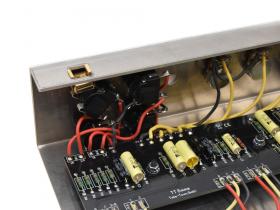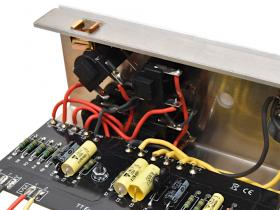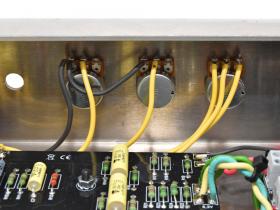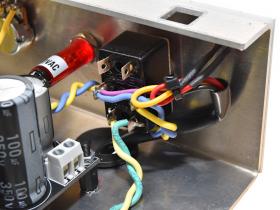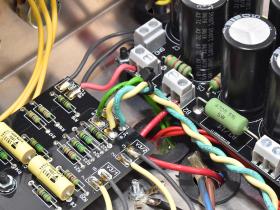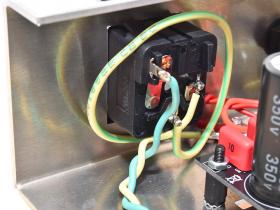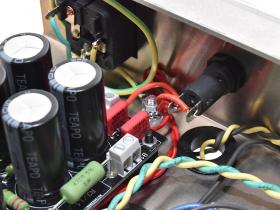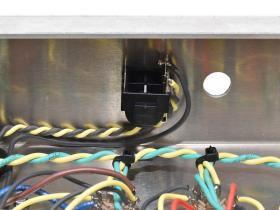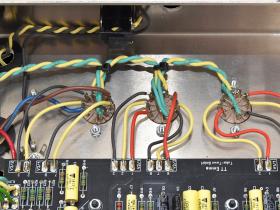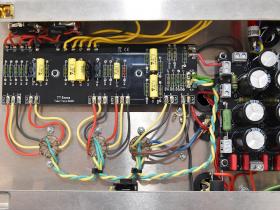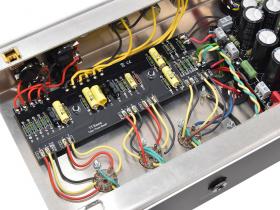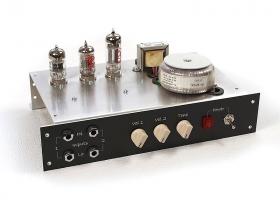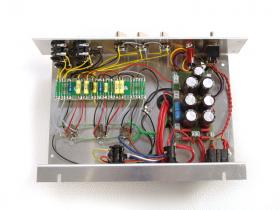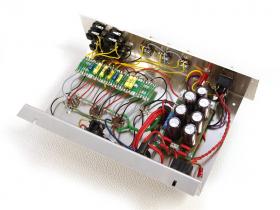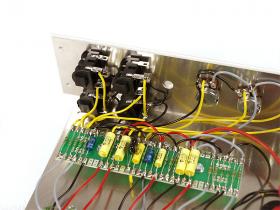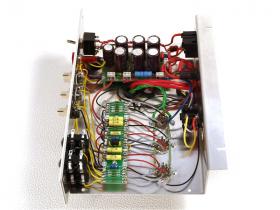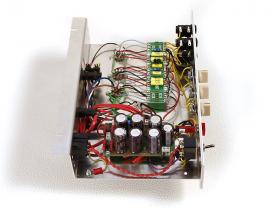
Emma
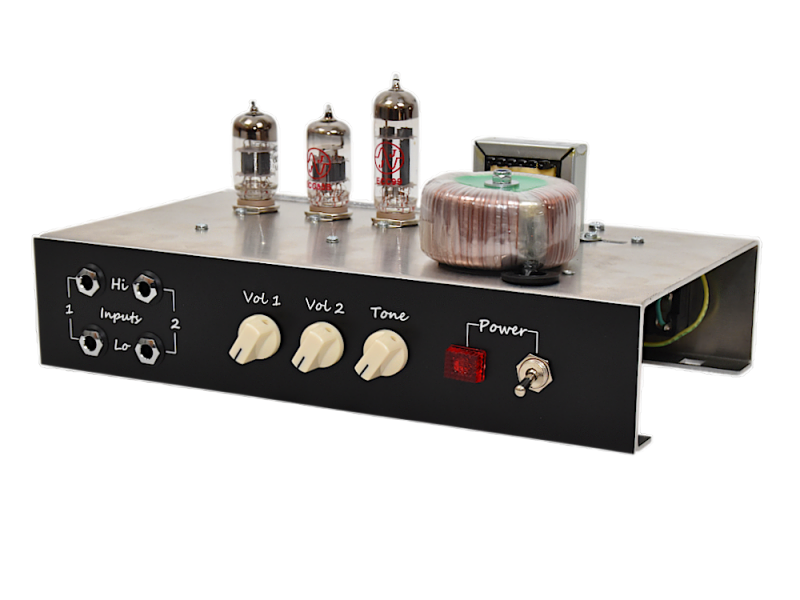
Emma
Although the 5E3 isn’t one of the most powerful amps, it still requires a certain volume to drive the output stage.
This is easier with the Emma, although even here it must be made clear that the lady can be quite loud. The volume produced by a 3-watt tube amp is often underestimated.
The inspiration for Emma, as mentioned above, is the well-known and well-loved 5E3 from Fender, popular both with blues players and DIYers. This inspiration is obvious from Emma's preamp, which is nearly a 1:1 copy of the original circuit.
The Circuit
The heart of the preamp consists of a 12AY7 and a 12AX7. Two 12AX7s would of course also work, and was used by Fender in the later models, but a 12AY7 in V1 is important to the tone of the amp. The powerstage is the same as the mini-push-pull in the Lummerland Express, which minor changes; but an ECC99 is preferred as the power tube in the Emma. A 12AU7 can be used to reduce the power to 1–2 watts; but then the amp no longer sounds like a 5E3. An ECC99 power stage puts out about 3.5 watts, and is driven with a cathodyne phase inverter – loud enough to annoy the neighbors. The output transformer is the trusty 125C from Hammond, configured for a 22k primary
impedance, which can also be used for a 12AU7 or 12BH7, although these tubes are only theoretically useful. The layout provided assumes an 8-ohm speaker load. If a 4 or 16 ohm load is used, the secondary must be wired appropriately, as shown in the Hammond documentation.
Files
Schematic and Layout V2021 as PDF
Like the 5E3, the Emma has 2 inputs per channel; each channel has high and low sensitivity inputs. We have labeled the channels 'I' and 'II,' and the inputs as 'Lo' and 'Hi,' as these are more useful labels than the original 'Mic' and 'Instrument.'
Each pair of inputs has its own volume control. The second pair also has a tone control. Both channels use the same driver stage, which drives the power stage. No more and no less.
Because of the way the volume controls are wired in the 5E3, the setting of each control influences the other, regardless which input is used. The originals act this way, too, and is an important part of the 5E3.
Our small standard power supply from the shop is used, which provides more than enough power while requiring very little space. The connections B2 and B3 in the schematic refer to the respective connections on the power supply unit. The 6.3 filament voltage is taken directly from the TT toroidal transformer.
The chassis is the Lummerland Express chassis drilled for four inputs.
What does it sound like?
We were astonished how close the tone of the first prototype was to the original. A direct A/B comparison showed some differences, especially in the behavior of the overdrive, but these are minimal. Asked to quantify, we would say we have achieved about 90% of the 5E3 sound – but only with an ECC99 as the output tube and a 12AY7 in V1! In any case, the Emma produces a full tube sound and is a joy to play.
Media
Components
A kit with parts, as well as the appropriate chassis (which can also be used for other projects of this type) and a faceplate are available in the TT-Shop
Warnings!
Caution is necessary. Even though this isn't a particularly powerful amp, it nevertheless works with voltages with are potentially lethal. This amp is NOT appropriate for beginners!
Reading and understanding schematics, use of measurement devices, and good experience with voltages over 60V are prerequisites for the successful completion of this project.
Pics
Pictures version 2021
Pictures pre version 2021

